Explore the Path to Becoming a Wildlife Conservationist
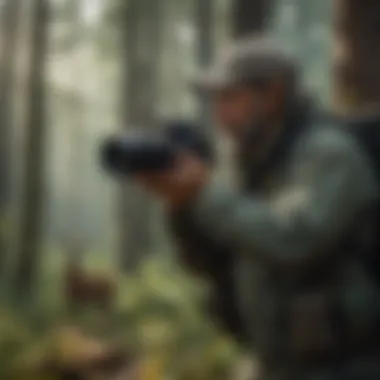
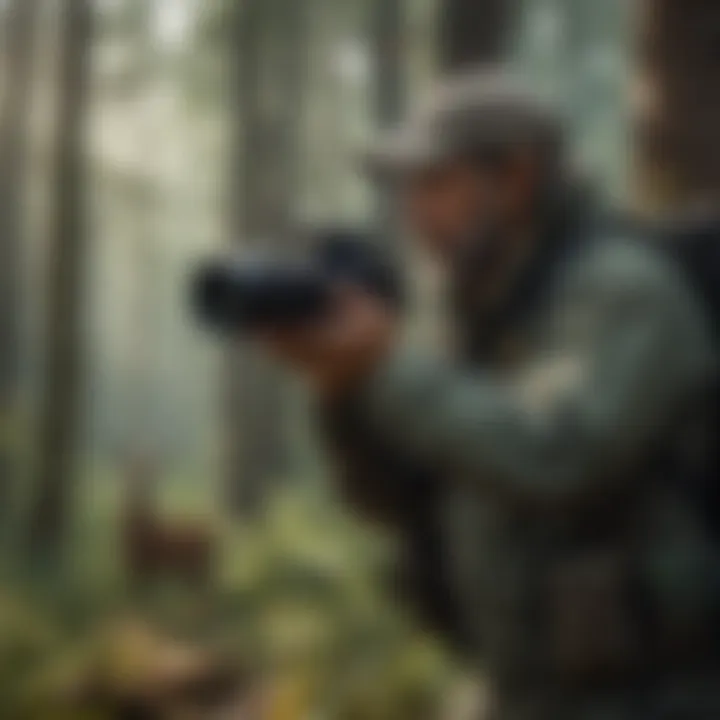
Intro
Wildlife conservation is more than just a career; it’s a profound commitment to preserving the delicate balance of nature and protecting the myriad species that share our planet. This journey is filled with intricate pathways that blend scientific knowledge, fieldwork, and advocacy. As the natural world faces a plethora of challenges ranging from climate change to habitat destruction, the role of a conservationist has never been so crucial. In this comprehensive guide, we delve into what it truly means to be a wildlife conservationist, exploring educational frameworks, the necessary skill sets, and real-world examples of how individuals and organizations confront ecological challenges.
Understanding Woodland Ecosystems
Forests are often referred to as the lungs of our planet, playing a pivotal role in producing oxygen and sequestering carbon. This section will illuminate the importance of these ecosystems in maintaining biodiversity and regulating climate.
Importance of Biodiversity in Forests
Biodiversity in forest ecosystems is not merely a luxury; it is essential for ecological health. Diverse species create a web of life that supports various food webs and promotes adaptability to changing conditions. For example, a healthy forest with a rich diversity of tree species can withstand pests and diseases better than monoculture stands. Not only does this enhance resilience, but such diversity also supports unique habitats for countless animal species, reinforcing the need for effective conservation practices.
Role of Forests in Climate Regulation
Forests are vital for climate regulation. Trees absorb carbon dioxide during photosynthesis, making them invaluable in the fight against global warming. A recent study suggests that deforestation contributes to up to 10% of global greenhouse gas emissions. This points to the direct necessity of preserving woodland areas not only for their aesthetic and recreational values but also for mitigating climate change.
"Forest ecosystems play a central role in absorbing carbon and mitigating climate change, making forest conservation an urgent priority."
Sustainable Forestry Practices
Sustainable forestry is not just about harvesting timber; it involves a thoughtful approach to managing forest ecosystems to maintain their health and productivity for future generations.
Principles of Sustainable Forestry
Sustainable forestry practices can be summed up in a few key principles:
- Maintain ecological integrity: Ensure that forest ecosystems remain healthy and functional.
- Economic viability: Balance the need for resource extraction with the preservation of forest ecosystems.
- Social equity: Involve local communities in conservation and management practices.
By adhering to these principles, professionals can effectively manage woodland areas, contribute to economic growth, and enhance the livelihoods of surrounding communities while ensuring environmental sustainability.
Case Studies of Successful Implementations
There are notable examples of successful sustainable forestry practices that can inspire future conservationists. For instance, the Forest Stewardship Council (FSC) has established guidelines that promote environmentally appropriate and socially beneficial forestry. Their success in certifying sustainable timber has led to improved practices in logging communities worldwide.
Woodland Stewardship Techniques
Stewardship in woodland management is essential for ensuring that forests remain healthy and vibrant. This requires a blend of science, traditional knowledge, and active involvement from various stakeholders.
Forest Management Plans
Creating a comprehensive forest management plan is crucial for ensuring the sustainability of woodland areas. These plans typically outline:
- Objectives: Define long-term goals for forest health and resource use.
- Monitoring: Establish metrics for assessing forest conditions and biodiversity.
- Engagement: Foster discussions with local communities and stakeholders about management strategies.
By maintaining these plans, wildlife conservationists can adapt to changing conditions and ensure that ecosystems thrive.
Conservation Strategies
Effective conservation strategies often involve a multi-pronged approach that combines habitat restoration, community engagement, and policy advocacy. Some effective strategies include:
- Reforestation efforts: Planting native species to restore degraded areas.
- Invasive species management: Controlling non-native species that threaten local biodiversity.
- Community education programs: Raising awareness about the importance of woodland conservation.
As aspiring wildlife conservationists navigate their journey, understanding these elements is key to making a meaningful impact in the field of conservation.
Preface to Wildlife Conservation
Wildlife conservation is a crucial area that brings together many disciplines, from ecology and biology to socio-economic studies. The pressing need to protect our planet’s biodiversity and the ecosystems that sustain it cannot be overstated. Understanding the various elements that inform wildlife conservation helps lays a solid groundwork for aspiring conservationists.
The Importance of Wildlife Conservation
Protecting wildlife and their habitats is not merely about saving animals; it's about ensuring a balanced environment that benefits all forms of life, including humans. The extinction of species destabilizes ecosystems, disrupting food webs and diminishing the natural services they provide—like pollination, pest control, and climate regulation.
A few key points highlight the importance of wildlife conservation:
- Biodiversity Maintenance: A rich diversity of species contributes to resilient ecosystems. Different species have varying functions in their habitats, so their loss can lead to unforeseen consequences.
- Economic Value: Wildlife tourism supports many local economies. Safeguarding wildlife can stimulate local businesses, from eco-tours to park entrance fees.
- Cultural Significance: Many cultures hold wildlife and ecosystems as sacred. Protecting them safeguards heritage and knowledge passed through generations.
- Scientific Insight: Wildlife research can lead to advancements in medicine, agriculture, and technology. By conserving wildlife, we preserve opportunities for future breakthroughs.
In essence, wildlife conservation is not an isolated effort; it intersects with public health, climate issues, and economic development, making it a field of paramount relevance.
Historical Context
The roots of wildlife conservation lay in human history, intertwined with our evolving relationship with nature. Initially, many societies viewed wildlife purely as a resource—something to be hunted or harvested. However, as industrialization pressed forward, the exploitation of these resources often outpaced their ability to replenish, leading to significant declines in animal populations.
In the early 20th century, amid growing awareness of these issues, the first conservation laws emerged. The establishment of national parks and reserves began in countries like the United States with Yellowstone being the first in 1872. More recently, movements such as the establishment of NGOs focusing on various species have gained momentum.
Take, for example, the International Union for Conservation of Nature (IUCN), formed in 1948. Their work includes not only the protection of species but also promoting the involvement of local communities in conservation efforts.
Equally notable is the Convention on International Trade in Endangered Species of Wild Fauna and Flora (CITES) established in 1975, setting guidelines to ensure international trade does not threaten species survival.
The evolution of wildlife conservation continues to grow in complexity as we face modern challenges such as climate change, habitat destruction, and illegal wildlife trade, all of which require revisiting and reinventing strategies designed to address them.
"Conservation is a state of harmony between men and land." – Aldo Leopold
Thus, understanding the historical context of wildlife conservation positions aspiring conservationists to grasp not only the legacy of the work done but also the dynamic challenges that lie ahead.
Essential Qualifications for Wildlife Conservation
In the journey to becoming a wildlife conservationist, essential qualifications play a pivotal role. They serve not only as a foundation of knowledge but also as a gateway to hands-on experiences that define a conservationist's impact. Understanding what qualifications are necessary helps aspiring conservationists carve their path effectively and confidently in this challenging field.
The importance of these qualifications goes beyond mere academic achievements. They foster a deep appreciation of wildlife ecosystems, law enforcement, and policy-making. Furthermore, they facilitate the ability to engage with communities and stakeholders, paving the way for actionable conservation strategies. In short, a well-rounded educational background, coupled with relevant skills, lays the groundwork for a fulfilling career in wildlife conservation.
Educational Requirements
The educational journey for a wildlife conservationist often begins with a strong focus on foundational subjects like biology, ecology, and environmental science. These areas not only nurture a scientific mindset but also help in grasping the complexities surrounding wildlife and habitats. Institutions dedicated to conservation studies usually offer tailored programs that immerse students into the field from the get-go.
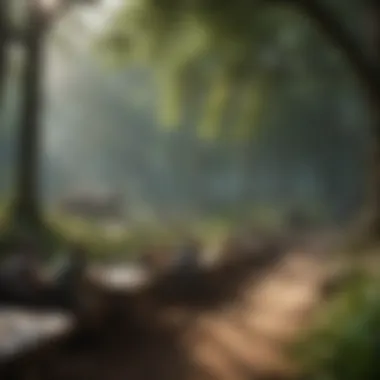
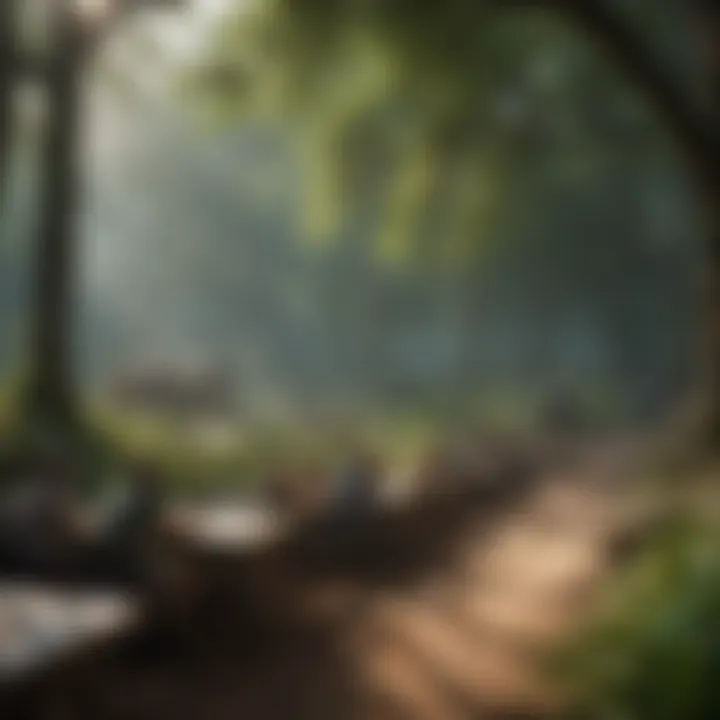
A common requirement is earning at least a bachelor's degree in a relevant field. However, some may find that an associate degree or educational coursework in wildlife biology, environmental studies, or similar disciplines can provide a solid entry point. Some positions may even accept considerable field experience in lieu of formal education. This flexibility allows individuals from various academic backgrounds to enter the field if they possess relevant experience and motivation.
Key components of educational attainments include:
- A deep understanding of ecological principles: It's critical for conservationists to know how ecosystems function.
- Wildlife laws and policies: Familiarity with legal frameworks helps conservationists navigate complex regulatory environments.
- Research methods: Understanding how to design and conduct research effectively aids in data collection and analysis.
Relevant Degrees and Certifications
While a degree in environmental science or wildlife conservation is often favored, several relevant degrees can bolster credentials. Specialized programs in marine biology, forestry, and zoology can provide focused education for specific types of wildlife conservation efforts.
Certifications also play a vital role in showcasing a conservationist's dedication and expertise. Programs such as the Certified Wildlife Biologist credential from the Wildlife Society can enhance one's profile significantly in a competitive job market. Other noteworthy qualifications include:
- Master's degrees or higher in specialized areas of conservation: Advanced degrees provide greater insight and often lead to research opportunities.
- Field certifications: Skills such as wildlife handling, GPS usage, or specific software like ArcGIS can make candidates more marketable.
- Health and safety training: Understanding safety protocols, especially when working in remote areas, is crucial for all conservationists.
Ultimately, each qualification checks a box that signals preparedness to tackle the many challenges of wildlife conservation. In this field, where science meets advocacy, both educational background and practical certifications come together to foster change for wildlife and their habitats.
Skills Required for Effective Conservation Work
The realm of wildlife conservation demands more than just a passion for nature; it requires a well-rounded skill set tailored to the multifaceted challenges of conserving wildlife. As conservationists dive into the intricate dance of ecosystems, possessing specific skills can make the difference between success and failure in their endeavors. Whether it’s effectively addressing pressing issues, conducting research, or garnering public support, each skill holds a significant weight in the conservation toolkit. Let's explore the core skills essential for effective conservation work, breaking down how they contribute to meaningful and impactful efforts in wildlife protection.
Analytical and Critical Thinking Skills
In the heart of wildlife conservation lies the necessity for analytical and critical thinking skills. These skills are akin to a double-edged sword, enabling conservationists to dissect problems, analyze data, and devise solutions that are grounded in reality. Today’s conservation challenges are oh-so-complex, often requiring a combination of scientific understanding and creative problem-solving.
- Data Interpretation: Conservationists regularly collect vast amounts of data, from animal populations to habitat conditions. Being able to interpret this data accurately is crucial. For instance, if counts of a certain bird species suddenly drop, critical thinking helps determine whether it’s due to habitat loss, climate change, or another factor.
- Evaluating Strategies: Not every approach works the same for different species or environments. A savvy conservationist can assess past strategies’ effectiveness and pivot accordingly. They might look at the outcome of a reintroduction program of wolves in Yellowstone and decide if similar measures can be applied in other areas.
- Problem Analysis: Often, the root causes of problems are not immediately evident. The ability to dig deep and understand underlying issues, like socio-economic factors affecting poaching, is invaluable. Understanding these layers can inform more effective and nuanced conservation strategies.
Field Research Skills
Field research skills are the bedrock of hands-on wildlife conservation. These skills enable conservationists to understand the species they work with and the environments they inhabit. From tracking migratory patterns to assessing habitat quality, field research is where theory meets practice.
- Survey Techniques: Knowledge of various survey methods, like camera trapping or direct observation, allows professionals to gather the necessary data on wildlife populations. Unorthodox methods, like using acoustic monitoring to track frog populations, showcase how innovative approaches can yield rich data.
- Habitat Assessment: Fieldwork often involves evaluating and categorizing habitats. Understanding vegetation types, soil properties, and water sources provides insights into the health of ecosystems. For instance, measuring the density of shrub cover can indicate the potential for certain bird species to thrive in that habitat.
- Safety Protocols: Effective field research isn't just about data—it’s also about safety. Knowledge of wildlife behavior, particularly for more dangerous species like bears, ensures that conservationists can operate without undue risk, helping minimize encounters that can lead to conflict.
Communication Skills
Effective conservation doesn’t happen in silos; it requires strong communication skills to engage various stakeholders. Whether it’s speaking with the local community, collaborating with NGOs, or presenting findings to government officials, the ability to convey ideas succinctly and persuasively is paramount.
- Public Engagement: Successful conservationists must bridge the gap between science and the general public. They need to explain complex ecological concepts in simple language, making them comprehensible and relatable. This can involve organizing workshops or community events to foster understanding and support for local initiatives.
- Collaboration: Working effectively with different organizations means understanding how to navigate various institutional cultures. A conservationist may need to discuss project goals with a local government office while also liaising with a non-profit organization. Having the ability to adapt communication styles to suit diverse audiences is key.
- Reporting Findings: Sharing research findings in an accessible format is crucial. Writing detailed reports that are clear and informative can help secure funding or support for future projects. They might present at a conference, sharing insights that inspire others to take action.
"Effective communication in conservation is not just about sharing facts; it’s about inspiring action and fostering a sense of shared responsibility among all stakeholders."
Pathways to Gaining Experience
Gaining practical experience is a cornerstone in the journey to becoming a wildlife conservationist. It’s one thing to study the theories and methodologies that shape conservation, but real-world experience molds those concepts into tangible skills. Engaging with wildlife and understanding ecosystems directly through hands-on experience opens a vista into the complexities and beauty of nature. Moreover, many employers look for candidates who don’t just talk the talk but have walked the walk. This section highlights two main pathways: internships and volunteer opportunities, as well as fieldwork and research projects.
Internships and Volunteer Opportunities
Internships and volunteer roles provide invaluable insights into the realms of wildlife conservation. They allow aspiring conservationists to step into the shoes of professionals already in the field. These experiences help individuals develop critical skills such as teamwork, project management, and on-the-ground decision making. As the saying goes, "You learn to swim by getting into the water."
Some benefits of internships and volunteering include:
- Networking: Connections made through these programs can lead to future job opportunities.
- Skill Development: Tasks may range from data collection to animal care, pushing your abilities in diverse areas.
- Resume Enhancement: Demonstrating real-world experience adds weight to your educational qualifications.
To find relevant opportunities, consider platforms like Reddit or professional networks on Facebook. Search for organizations in your area, or even globally, that align with your conservation interests.
Fieldwork and Research Projects
Fieldwork presents a hands-on approach to wildlife conservation. It’s where classroom knowledge meets the wild, and where many individuals experience firsthand the challenges such as navigating rough terrain or working in adverse weather conditions. Participating in field research projects lifts the veil on species populations, habitats, and the intricate relationships within ecosystems.
Engaging in fieldwork can include:
- Data Collection: Gathering information on wildlife behavior, population counts, or habitat conditions can contribute to larger studies that reflect conservation status.
- Habitat Restoration: Involved in actively restoring or preserving an ecosystem, you get a visceral sense of the impact of your efforts.
- Species Monitoring: Observing and tracking species provides critical data that influences best practices and policy-making.
"What you do makes a difference, and you have to decide what kind of difference you want to make."
Those wishing to embark on a career in wildlife conservation must seize these pathways. They come with the necessary empirical backdrop that enhances theoretical understanding. So, while reading textbooks may offer knowledge, it is within the fields, lakes, and forests where your real education resides.
Understanding the Role of Conservation Organizations
The significance of conservation organizations cannot be overstated in the realm of wildlife conservation. They act as the backbone for initiatives aimed at protecting and preserving various species and their habitats. With the increasing rapidity of habitat loss, climate change, and poaching, these organizations provide a structured approach to ensure that delicate ecosystems receive the attention they require. Whether driven by global concerns or local community needs, their roles can significantly impact not only the wildlife at stake but also the human communities that share the land with them.
Conservation organizations come in various forms; some focus on localized issues, while others tackle global challenges. As a wildlife conservationist, understanding the intricacies of these organizations—what they do, how they operate, and their partnerships—is paramount. This understanding can pave the way for effective collaborations and better resource mobilization, ultimately leading to improved outcomes in conservation efforts.
Local and Global Organizations
When we talk about conservation, we often find ourselves at the crossroads of local efforts and global movements. Local organizations might work specifically within a community, addressing issues that directly impact nearby wildlife. For example, the Defenders of Wildlife, based in the United States, engages in maintaining populations of species like the gray wolf while mediating conflicts between wildlife and agricultural interests. On the flip side, global organizations like the World Wildlife Fund (WWF) work on a grand scale, tackling wildlife conservation from multiple angles—species protection, habitat conservation, and policy advocacy, to name a few.
Both types of organizations are complementary in nature. A local group may provide ground-level insights—pointing out what species are under threat due to specific activities like logging or development projects—while a global organization can leverage broader influence to mobilize international support and funding. The collaboration of these entities can exponentially amplify their impact, working hand-in-hand towards common goals.
Partnerships and Collaborations
Building partnerships is the name of the game in wildlife conservation. Conservation isn't a solo act; it requires a symphony of various stakeholders coming together. This includes government agencies, nonprofits, local communities, and even the private sector. Each of these entities brings unique resources and perspectives to the table. It’s not just about sharing funding or manpower; it’s about pooling knowledge, skills, and influence.
For example, a local nonprofit focused on the conservation of sea turtles may partner with a university research team to gather empirical data about nesting patterns. While the nonprofit knows the terrain and community dynamics well, the university provides scientific expertise and credibility. Together, they can push for stronger protective measures, which is a win-win.
Moreover, collaborations extend beyond just the local level. National or international partnerships can amplify attention and resources directed towards a cause. When organizations unite for larger campaigns, such as the global fight against poaching of endangered species, they generate greater momentum. This kind of synergy can often lead to enhanced funding opportunities, increased volunteer engagement, and more effective outreach strategies.
"Collaboration in conservation is essential. When we work together, each organization’s strengths shine through, helping wildlife more effectively."
In essence, understanding the roles of these conservation organizations and the importance of partnerships equips aspiring wildlife conservationists with the knowledge they need to navigate this complex field. Whether tackling local challenges or engaging in global efforts, every contribution counts.
Challenges in Wildlife Conservation
Wildlife conservation is a noble pursuit, but it certainly doesn't come without its own share of obstacles. Challenges are often what make this field both daunting and rewarding. Addressing these hurdles is crucial for effective conservation efforts, as they influence not merely the approaches taken but also the outcomes expected. In this section, we shall explore the significant challenges faced in wildlife conservation and their implications on both wildlife and the conservation community.
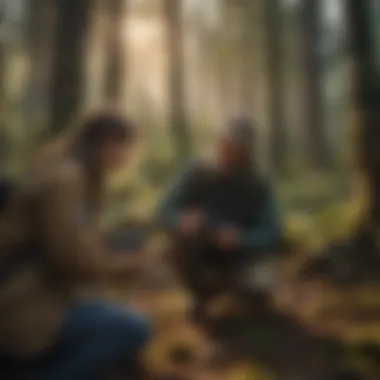
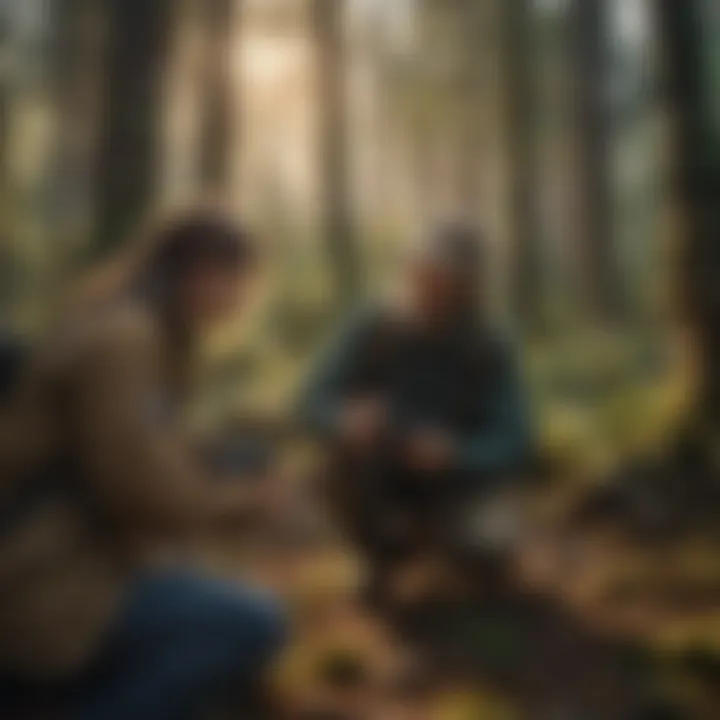
Human-Wildlife Conflict
Human-wildlife conflict is one of the most pressing issues in conservation today. As urban areas expand and people encroach on natural habitats, wildlife often finds itself in hostile situations. Farmers, for example, might find elephants trampling their crops, leading to economic losses and frustration. In turn, local communities may turn to retaliatory measures, harming the very species they once coexisted with.
The ramifications are twofold: not only does it threaten the survival of various species, but it can also lead to diminished safety for humans. Effective solutions require understanding the needs and fears of both parties. Using strategies like wildlife corridors or innovative deterrent methods can help mitigate these conflicts, pushing us towards more sustainable coexistence.
"Finding a balance is key. Protecting the wildlife while ensuring community safety and benefit creates a win-win situation."
Funding and Resource Constraints
Beneath the surface of conservation efforts lies the urgent need for funding. Many organizations are running on shoestring budgets, fighting tooth and nail for grants, donations, or governmental support. This piecemeal approach can lead to inadequate manpower or resources, which directly impacts the quality of conservation work.
For instance, consider a scenario where a project aimed at rehabilitating endangered species faces its financial constraints due to shifting priorities in donor organizations. This often results in interruptions that can jeopardize weeks or months of hard work. To combat this, it is essential to advocate for diversified funding sources. Partnering with private sector organizations or engaging in crowd-funding campaigns can provide multiple avenues for financial sustainability.
Climate Change Impact
Lastly, climate change is perhaps the overarching threat to wildlife conservation. Rising temperatures, shifting weather patterns, and habitat loss are realities that conservationists must deal with constantly. Take polar bears, for instance; as ice caps melt, their hunting grounds disappear, putting them at serious risk of starvation. Adaptability is not just a trait we associate with wildlife; it’s a necessity for conservation strategies moving forward.
Understanding how climate affects ecosystems can guide informed decision-making. A multi-disciplinary approach involving climate science, ecology, and community engagement can offer pathways to resilience.
Each of these challenges signifies not merely a burden but an opportunity for innovative solutions. By identifying and tackling these roadblocks, the world of wildlife conservation can evolve, creating enduring impacts for future generations.
The Impact of Technology on Conservation Efforts
The integration of technology into wildlife conservation is like adding a powerful magnifying glass, bringing issues and solutions into sharper focus. Technological advancements not only enhance the way conservationists gather data but also how they analyze and apply this information in the field. The real-time capabilities of these tools allow for faster responses to environmental threats, ultimately playing a crucial role in the protection of wildlife and their habitats.
Use of Drones and Remote Sensing
Drones have become a game-changer in the world of wildlife conservation. These flying machines can cover vast areas of land, giving conservationists bird's-eye insight that was previously labor-intensive and time-consuming to achieve. With advanced cameras and sensors, drones can capture detailed images and monitor animal behaviors without disturbing their natural habitats. This is a significant leap forward, especially in monitoring endangered species or tracking poachers.
Some key benefits include:
- Efficiency: Drones can survey large areas in a fraction of the time it would take on foot.
- Cost-effective: Using drones reduces the need for extensive human resources and travel costs associated with traditional methods.
- Real-time data: Live footage allows for immediate analysis and quick decision-making to address urgent situations.
While these technological tools indeed present advantages, there's also a conversation to be had about their limitations and challenges. For instance, the need for skilled operators who can navigate the technology and interpret the data effectively cannot be overlooked. Additionally, regulations around airspace and ethical considerations regarding wildlife disturbance must be adhered to.
Conservation Genetics and Data Analysis
Another significant aspect of technology's impact on conservation is found in conservation genetics and the associated data analysis. Genetics enables scientists to understand the biodiversity and genetic health of populations. By utilizing DNA analysis, conservationists can identify genetic diversity within populations and detect signs of inbreeding, which is vital for developing effective management plans.
Consider the following advantages:
- Population monitoring: Genetic tools help track population sizes and structures, guiding conservation strategies.
- Species identification: Advanced methods allow for the identification of species that may be difficult to distinguish visually, which is key in areas where several similar species coexist.
- Ecological insights: Data analysis from genetic studies can illuminate migration patterns and habitat use, thus informing habitat protection practices.
While genetic analysis offers profound insights, it also raises the need for rigorous data management and the potential for misinterpretation. Ensuring that conservationists are trained in both the collection and interpretation of genetic data is crucial. Moreover, collaboration between geneticists and field scientists can bridge gaps in understanding and implementation, leading to more effective conservation efforts.
"Technology serves as a tool that, when wielded appropriately, can enhance our understanding and capabilities in wildlife conservation, making the daunting task of protecting endangered species more achievable."
As we look toward the future, combining these technological advancements with traditional conservation methods promises a more holistic approach to safeguarding wildlife. It’s not just about having the latest gadgets; it’s about understanding how to use them effectively in concert with long-standing conservation practices.
Legal and Ethical Considerations
In the realm of wildlife conservation, navigating the legal and ethical landscape is crucial. This chapter delves into the laws that govern wildlife protection and the ethical practices that conservationists should embrace. Understanding these dimensions enhances a conservationist's ability to advocate for wildlife while adhering to the regulatory framework that governs their actions.
Wildlife Protection Laws
Wildlife protection laws serve as the backbone for conservation efforts worldwide. These laws not only provide a framework for the conservation of endangered species but also help prevent illegal poaching and habitat destruction. Various international agreements, like the Convention on International Trade in Endangered Species of Wild Fauna and Flora (CITES), exist to regulate wildlife trade and protect species at risk.
The significance of these laws cannot be overstated. They create a legal obligation for individuals and organizations involved in conservation to act responsibly. Failure to comply with wildlife protection laws can lead to hefty fines or even imprisonment. Moreover, these laws can empower local communities, ensuring that they have a stake in the preservation of their natural heritage.
For instance, the Endangered Species Act (ESA) in the United States provides habitat protection and recovery plans for listed species. These provisions not only protect the species themselves but help maintain biodiversity, which is crucial for ecosystem stability. Thus, understanding and advocating for these laws can lead to effective conservation strategies that align with legal requirements.
Ethical Wildlife Management Practices
Ethical wildlife management practices are another cornerstone of responsible conservation. These practices promote respect for animal welfare and aim for sustainable interactions between humans and wildlife. Conservationists must rely on ethical principles to guide their decisions, ensuring that their actions do not harm the very species they aim to protect.
A few ethical considerations include:
- Minimal Impact: Conservation activities should aim to minimize disturbance to wildlife, especially when engaging in fieldwork. Techniques should be chosen to reduce stress on animals and their habitats.
- Informed Consent: When working with local communities, it's vital to seek consent and involve them in decision-making processes. This approach promotes community ownership of conservation projects, leading to more sustainable outcomes.
- Transparency: Being transparent about one's methods and intentions builds trust among stakeholders. Conservationists should openly share information about their efforts and engage with the public regularly.
"Ethics in conservation isn't just about what we do; it's about how we approach our role within the ecosystem."
In summary, the significance of legal and ethical considerations in wildlife conservation cannot be overlooked. They form the framework within which conservationists operate, allowing for the effective protection of wildlife while fostering partnerships with local communities and stakeholders. By understanding and applying these laws and ethical practices, aspiring conservationists can make a lasting impact in the field.
Advocacy and Public Engagement
Advocacy and public engagement play a crucial role in wildlife conservation, acting as the bridge between conservation efforts and broader societal awareness. These elements help cultivate a community that not only understands the importance of wildlife but actively participates in efforts to protect them. Without such involvement, conservation initiatives can fall flat, often due to a lack of support or understanding from the public.
First and foremost, effective advocacy promotes dialogue. When people are informed about the challenges facing wildlife, they become more likely to contribute positively. This doesn’t just mean donations — though those are certainly valuable — more so, it means getting people to think along the lines of sustainable practices. Advocacy fosters a sense of accountability within communities, pushing individuals to consider their own impact on the environment.
Here are a few specific elements that underline the significance of advocacy in wildlife conservation:
- Education: Raising awareness about endangered species and their habitats educates the public. This knowledge is the basis for empathy and support.
- Community Mobilization: It empowers groups to come together for a cause. When communities work collectively, they can lobby for stricter protection policies or organize conservation projects.
- Influence on Policy: A well-informed public can exert pressure on governmental bodies to enact or enforce strong wildlife protection laws.
Raising Awareness
Raising awareness about wildlife conservation is like planting a seed in the minds of individuals. It’s about cultivating understanding and passion for the environment. The more people know, the more they care — it’s a simple yet powerful truth. Various methods can be employed to effectively reach different audiences. Social media platforms such as Facebook and Instagram are great places to start. Posting engaging content, like stunning images of wildlife or infographics depicting species decline, can capture attention and spark conversation. Alternatively, community workshops or school presentations can personalize these issues, making them relevant to local communities.
Moreover, leveraging platforms like Reddit can open channels for discussion, allowing individuals to voice concerns and share experiences regarding wildlife and conservation.
Involving Community Stakeholders
Involving community stakeholders is not just a helpful approach; it’s often essential for the success of conservation initiatives. When people feel that they have a stake in conservation efforts, they are much more likely to contribute their time, resources, and passion.
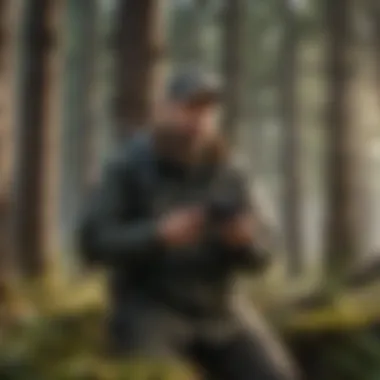
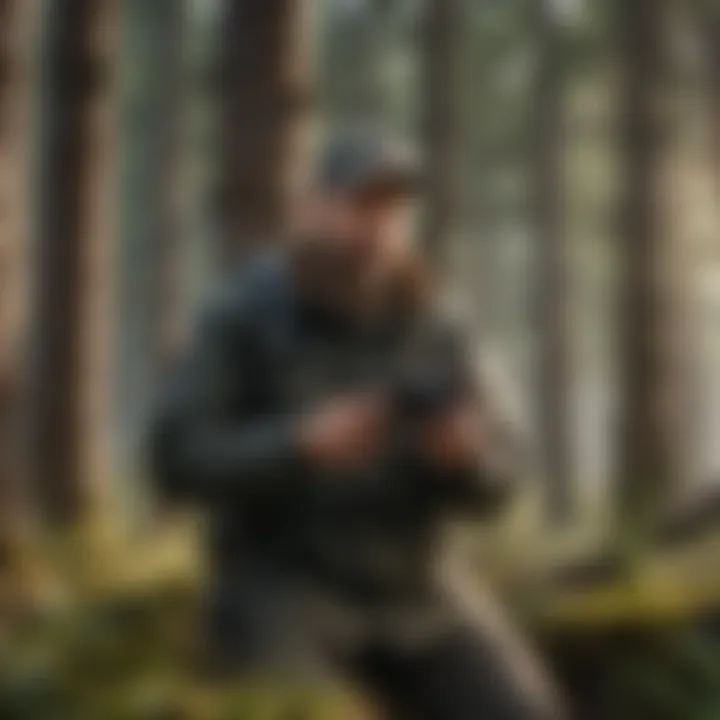
Community stakeholders can include local residents, business owners, schools, and even tourists. Their diverse perspectives can lead to more comprehensive conservation strategies that take into account the needs and aspirations of various groups.
- Collaborative Projects: Engaging with the community on projects ensures that everyone has a say, from residents impacted by wildlife tourism to local businesses that may be affected by conservation laws.
- Consultation and Feedback: Regular dialogue between NGOs and community members can help adapt initiatives to better serve local interests.
- Empowerment: When communities are empowered to take charge of conservation projects, they often take pride in these efforts, leading to more sustainable practices.
"Community engagement is not just an option; it's a fundamental aspect of wildlife conservation. It's like the old saying goes: 'Many hands make light work.' Through collaboration, we make our efforts far more effective."
In closing, advocacy and public engagement are indispensable to wildlife conservation. By raising awareness and involving community stakeholders, conservationists can cultivate a dedicated collective that understands the value of wildlife and is willing to protect it. Engaging with the community goes beyond mere participation; it creates a sense of ownership over conservation efforts, ultimately leading to more sustainable outcomes for wildlife and ecosystems.
Career Opportunities in Wildlife Conservation
The landscape of wildlife conservation has broadened considerably in recent years, offering a variety of career paths for those inclined to protect our planet’s biodiversity. The roles within this field extend beyond the basics of fieldwork, diving into intricate networks of organizations, both governmental and nonprofit, that require skilled personnel to implement effective anti-poaching measures, conservation education, habitat restoration, and research.
Pursuing a career in wildlife conservation not only brings personal fulfillment but also contributes significantly to the global agenda for sustainable development and the preservation of natural ecosystems. Understanding these opportunities is vital for budding conservationists, as it shapes their approach to contributing positively to a world increasingly threatened by human activity.
Government Agencies and Nonprofits
Governmental bodies are among the main players in wildlife conservation. They implement policies aimed at both protecting endangered species and restoring habitats. Entities like the U.S. Fish and Wildlife Service or the International Union for Conservation of Nature play pivotal roles in ensuring these regulations are followed. Working as a wildlife biologist or park ranger for such agencies can be particularly rewarding. These positions often focus on data collection, monitoring wildlife populations, and enforcing conservation policies.
Nonprofit organizations, such as the World Wildlife Fund or the Nature Conservancy, also offer a range of careers that blend advocacy with hands-on conservation. These roles might involve fundraising, public education, or direct action in the field. A few benefits of pursuing a career in this domain include:
- Diverse Specializations: Opportunities abound in research, fieldwork, policy advocacy, and community engagement.
- Collaborative Atmosphere: Working alongside like-minded professionals and volunteers can foster a community that values shared goals.
- Hands-On Experience: Depending on the role, one might work directly with endangered species or in ecosystem restoration projects.
However, it’s also essential to acknowledge the challenges. Government budgets can be tight, and nonprofit organizations often rely on grants and donations. Individuals in these fields must navigate these constraints while remaining dedicated to their conservation missions.
"The only way to make a lasting change is to engage, advocate, and educate. Every small effort adds up!"
Private Sector Involvement
The private sector has increasingly recognized the importance of wildlife conservation, leading to a range of opportunities in various industries. Many companies now prioritize sustainability, establishing corporate responsibility initiatives that set aside funds for conservation projects. This shift has opened doors for conservation specialists to work in environmentally-conscious businesses. For instance, ecotourism companies often seek conservationists to ensure that their operations do not negatively impact local wildlife.
Roles in consulting also emerge within the private sector, especially for firms advising corporations on sustainable practices. Environmental impact assessments are a growing field, catering to developers and corporations who wish to operate sustainably. Careers can include:
- Consultant Roles: Advising businesses on best practices for land use and resource management.
- Ecotourism Management: Developing programs that promote sustainability while encouraging wildlife preservation.
- Research and Development: Innovating new ways to incorporate conservation into corporate strategies.
Despite these promising prospects, it’s critical for aspiring conservationists to remember that working in the private sector may come with its own set of ethical dilemmas. Balancing profit motives with genuine conservation efforts can be complex, and professionals must navigate these waters carefully to remain true to their mission.
The Future of Wildlife Conservation
The future of wildlife conservation is not just a mere extension of current practices or strategies; it represents a critical juncture that requires innovative thinking and sustainable methodologies to safeguard biodiversity. As the planet faces escalating threats from climate change, habitat loss, and anthropogenic pressures, the prospect of wildlife conservation hangs in a delicate balance. This section will explore significant emerging trends, strategies, and the increasingly pivotal role of education in shaping a robust conservation landscape.
Emerging Trends and Strategies
In recent years, conservation has evolved to incorporate a wider range of methodologies, reflecting the complexities of environmental challenges. New technologies play an important role. For instance, advanced satellite imagery allows for in-depth monitoring of ecosystems that were previously inaccessible. Notably, data analytics has turned into a game-changer, enabling conservationists to predict trends, assess risks, and allocate resources more efficiently.
Some trends gaining traction include:
- Community-led conservation: Local communities are being equipped with tools and knowledge to manage their resources sustainably. This bottom-up approach ensures that those most affected by conservation decisions have a say, fostering greater ownership and commitment.
- Ecotourism: The rise of responsible travel offers opportunities to fund conservation initiatives. Tourists frequenting areas known for their rich biodiversity can provide crucial financial support while promoting awareness of conservation issues.
- Private sector involvement: Companies are increasingly recognizing their role in environmental stewardship and are funding various conservation efforts. There is a growing trend of businesses adopting green practices, influencing their supply chains in the process.
"Conservation is not just about saving animals; it's about reshaping the entire ecosystem of human understanding and involvement."
These strategies not only aim to protect individual species but also to create an integrative approach that encompasses entire ecosystems, allowing for more resilient wildlife populations that can adapt to ongoing changes.
The Role of Education in Conservation
Education serves as the bedrock for effective wildlife conservation by fostering awareness, promoting research, and cultivating future leaders in the field. The idea is simple: informed individuals are more likely to support and engage in conservation practices.
Several key components demonstrate how education can impact conservation:
- Curriculum Development: Educational institutions are incorporating environmental science and conservation topics into their curricula to prepare the next generation of conservationists. Courses range from ecology to sustainability practices, making students actively engaged in real-world challenges.
- Public Awareness Campaigns: Effective educational campaigns can bridge the gap between science and society. By leveraging social media platforms like Facebook and Reddit, conservationists can share information and generate discussions surrounding wildlife issues, gaining traction among diverse audiences.
- Skill Development Workshops: Practical training on analytical skills, field research, and community engagement is essential, equipping aspiring conservationists with the tools they need to make substantive contributions.
Establishing a strong educational foundation is essential, as it not only enhances knowledge but also encourages community participation. Together, these elements prepare individuals to make informed decisions and take actions that benefit wildlife conservation.
In summary, the future of wildlife conservation resonates with the call for intricate and adaptable strategies alongside a strong commitment to education. The task ahead is complex, but with coordinated efforts and a focus on nurturing informed stakeholders, there exists a sustainable pathway to preserve our planet's invaluable biodiversity.
Personal Reflections on Becoming a Conservationist
The journey to becoming a wildlife conservationist is not just a career choice; it's often a calling steeped in passion and dedication to the natural world. When individuals contemplate this path, personal reflections play a vital role not only in shaping their ambition but also in guiding their actions and decisions within this field. These reflections propel one to confront complex ethical dilemmas, the affects of climate change, and the dire need for effective preservation strategies, all while maintaining a drive to protect wildlife and their habitats. In this section, we delve into the reasons why this topic deserves our thoughtful attention.
Why Pursue a Career in Wildlife Conservation?
Choosing a career in wildlife conservation often stems from an intrinsic motivation to make a difference. Many find inspiration from their early experiences—perhaps it's the first time they observed a majestic eagle in flight or encountered a curious otter playing in the water. These encounters can ignite a lifelong passion for nature and a strong desire to safeguard it. Pursuing a career in this realm offers myriad benefits:
- Fulfillment through Impact: Many conservationists cherish the fact that their work directly contributes to the survival of species and ecosystems.
- Diverse Opportunities: The field is rich with diverse pathways, from field research and policy advocacy to education and community engagement.
- Interdisciplinary Approach: It combines biology, sociology, economics, and environmental science, providing intellectual stimulation and growth.
However, it's also important to consider that this path is not always a bed of roses. Many conservationists face challenges, including limited funding and the emotional toll of witnessing habitat destruction. Despite these hurdles, the rewards, such as creating a measurable difference in conservation efforts, often outweigh the difficulties.
Navigating the Career Path
Navigating the career path in wildlife conservation requires both strategic planning and adaptability to changing circumstances. Knowing where to start can feel overwhelming, but a structured approach can ease the journey:
- Identify your Passion: Focus on specific areas of interest—be it field research, policy-making, or ecotourism. This helps target your education and experiences effectively.
- Gain Relevant Experience: Engaging in volunteer work, internships, or field research can build practical skills and networks. Many successful conservationists initially started as volunteers, working their way up.
- Network Relentlessly: Building relationships with professionals in the field is crucial. Attend conferences, connect on platforms like LinkedIn, or even join local conservation groups to cultivate these connections.
- Continuous Education: Stay updated with emerging trends in conservation through workshops, online courses, or even formal education, as the landscape of wildlife conservation constantly shifts.
"The greatest threat to our planet is the belief that someone else will save it."
— Robert Swan
Exploring this crucial topic not only offers insight into the individual’s motivations but also highlights the broader impact one can have on the world through dedicated conservation efforts.
Ending
In wrapping up our exploration into wildlife conservation, it’s imperative to underline the vital ongoing engagement that characterizes this field. Wildlife conservation, far from being a static endeavor, requires a dynamic interplay of knowledge, commitment, and adaptation. As one delves into the nuances of this profession, the theme that emerges is the ongoing journey—not just for the wildlife in question but equally for those dedicated to protecting it.
The Ongoing Journey in Wildlife Conservation
The journey towards becoming a conservationist is rarely a straight line; individuals often find themselves veering off course or traveling unexpected paths. The continual evolution of ecosystems, coupled with shifting human priorities, necessitates constant learning and responsiveness in conservation efforts.
- Commitment to Lifelong Learning: The knowledge base regarding species behaviors, habitats, and management techniques is perpetually expanding. Conservationists must remain up-to-date with the latest research, employing findings in real-time to inform practices. The Internet, for instance, provides access to a plethora of academic articles and communities such as Reddit.
- Communities' Engagement: The journey involves fostering relationships with local communities, governmental organizations, and international bodies. Active participation and inclusive strategies benefit conservation initiatives by leveraging local knowledge while ensuring stakeholder engagement in projects.
- Embracing Change and Adaptation: Faced with the relentless march of climate change, conservationists must demonstrate agility in their approaches. Adaptability informs the strategy, whether it’s shifting conservation efforts based on species migration trends or adjusting methodologies due to regulatory changes.
"The only thing that is constant is change"—this adage holds especially true in wildlife conservation. Each shift in policy, research, or community engagement presents new opportunities and challenges to tackle.
In summary, the road to becoming a wildlife conservationist is multidimensional, encouraging an understanding of not just the 'what,' but the 'why,' 'how,' and 'who', weaving an intricate tapestry of roles, responsibilities, and relationships. As the narrative of wildlife conservation progresses, the challenge remains not only to protect animals and their habitats but to sustain the passion and resolve of those who have dedicated their lives to this noble cause.







